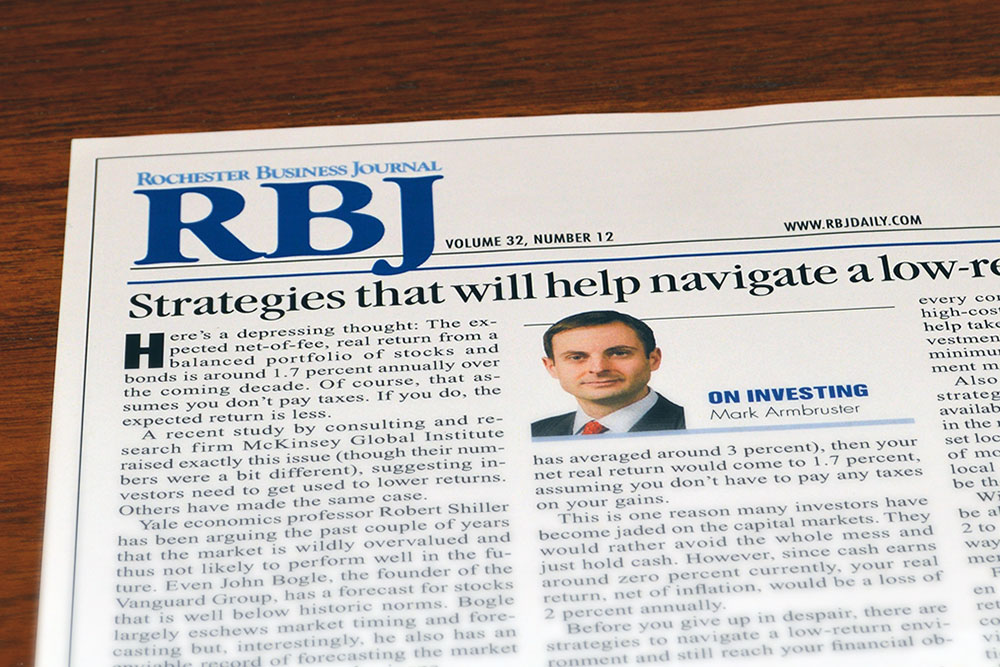Mark Armbruster
VIEWPOINT
Given the length of the current stock market rally and the level stock market valuations have reached, there is a large and growing consensus that the next downturn is right around the corner.
Many believe that rather than just a modest decline, the next downturn will be another sharp, painful correction, similar to what we experienced in 2008.
I’m not sure I agree with those sentiments. Nevertheless, it is instructive to think through what to do in the event that the next bear market arrives sooner rather than later. This is a particularly important exercise, as investors are apt to react emotionally when a financial crisis occurs.

Everyone is risk tolerant in a bull market, but bear markets test our mettle. It therefore makes sense to devise a plan before the next market panic to ensure you are making rational decisions, which may be difficult during stressful and emotional times.
First off, don’t panic. Selling at the bottom may cause damage that your portfolio will never be able to recoup. It can be hard to watch your portfolio decline in value, particularly if you are relying on it to meet living expenses.
However, ask yourself what has changed as a result of the market’s decline. Are people still going to work? Are companies still trying to earn profits? Is the economy still functioning? If so, there probably is no reason to expect Armageddon. During times of market extremes it may seem like stocks are never going to rebound, but in over 200 years of history, they always have.
Selling to stop the pain may feel good at the time, but in order to be successful at timing market peaks and troughs, you not only have to get out of the market at the right time, but you also have to get back in before it rebounds. There isn’t much evidence that investors have used this strategy profitably over time. Rather, a better approach is to stick to your discipline, re-evaluate your portfolio and make changes that are in accordance with your long-term plan….

